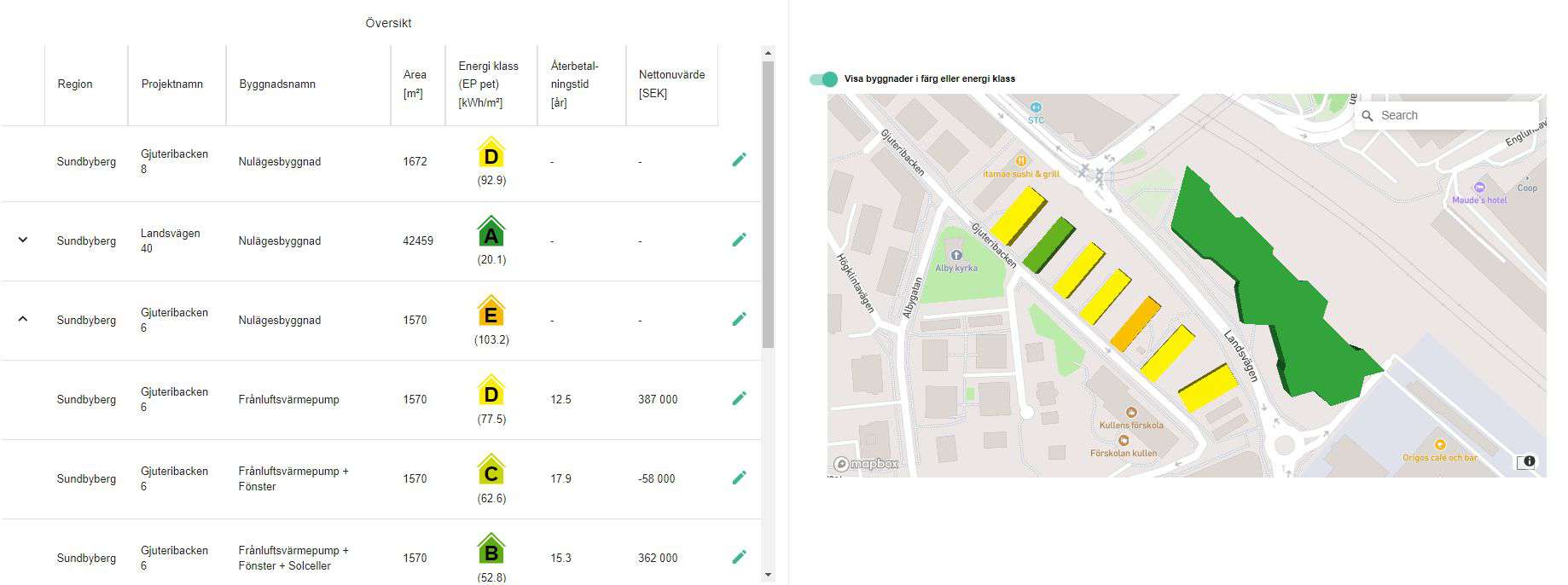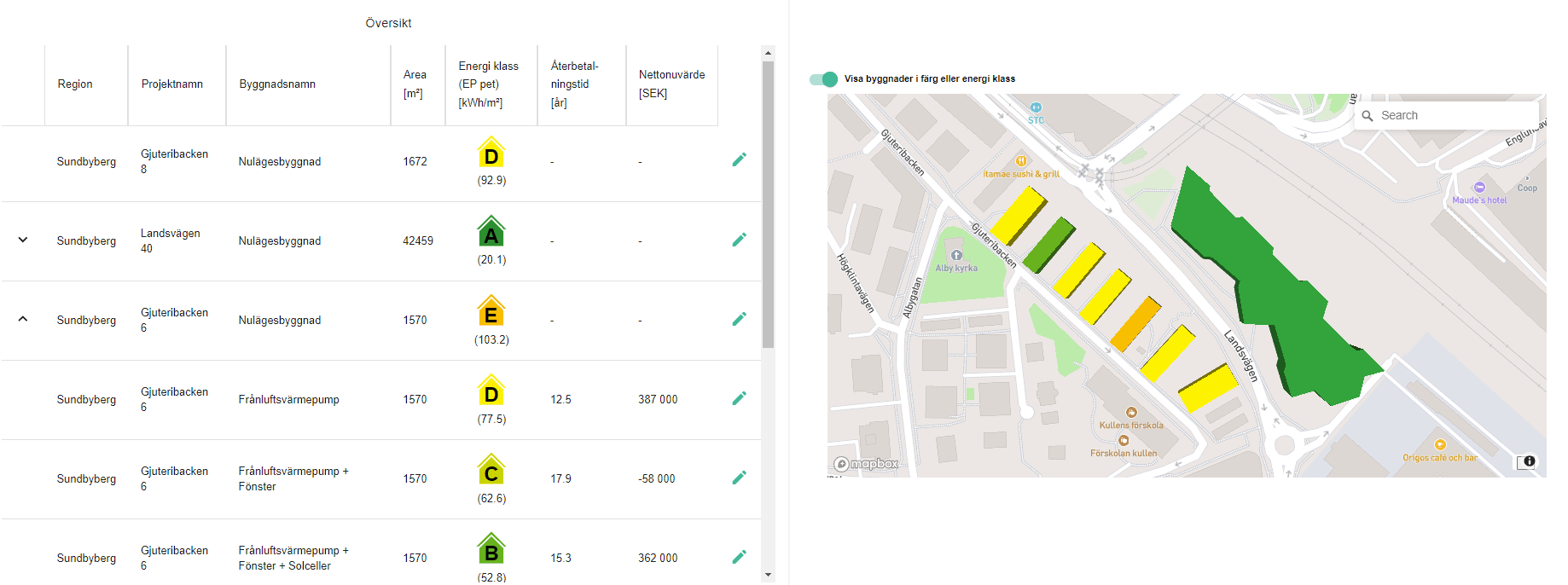EPBD and EED Implications for Swedish Real Estate
The Energy Performance of Buildings Directive (EPBD) and the Energy Efficiency Directive (EED) are two EU directives of great importance for all new and existing buildings in all member states. These two directives have existed for a long time within the EU but have been revised and reissued in new versions over the past years. This blog post by our Senior Energy Advisor, Johnny Kronvall, considers the EPBD and EED Implications for Swedish Real Estate.
In summary, the new versions of the EPBD and EED introduce stricter requirements for energy efficiency, certification, and energy management within the real estate sector. This can lead to both challenges and opportunities, including initial costs for upgrades and long-term savings through improved energy efficiency.
Good summaries and quantifications of the requirements and contents of the directives can be found here:
-
EPBD: https://ec.europa.eu/commission/presscorner/detail/sv/qanda_24_1966
-
ED: https://energy.ec.europa.eu/topics/energy-efficiency/energy-efficiency-targets-directive-and-rules/energy-efficiency-directive_en?prefLang=sv&etrans=sv
You can easily select/model from the map an entire block with the new Multi-Building Group feature in BIM Energy Renovation and gain an overview of energy usage in the buildings to make quick decisions on the prioritisation of measures.
The Swedish Energy Agency and the Swedish National Board of Housing, Building and Planning Key Actors for the Swedish Implementation
Work is underway in the member states to adapt national legislation and domestic regulations to the contents of the revised directives.
In Sweden, the government in May 2024 tasked the Swedish Energy Agency with:
“developing the basis for implementing parts of the revised EU directives on energy efficiency, energy performance of buildings, and renewable energy.”
The implementation of the task will be carried out in collaboration with the Swedish National Board of Housing, Building and Planning, and the task must be reported to the government by March 1, 2025. By October 11, 2025, EU member states are required to put into force the laws necessary to comply with the revised directives.
Parallel to the government’s task to the Swedish Energy Agency, the Swedish National Board of Housing, Building and Planning is working to radically revise regulations in construction (including BBR) to present what is being called the “Building Regulations of Opportunities,” which are expected to be presented at the turn of the year 2024/25, to take effect by mid-2025, with a voluntary transition period of one year during which developers can apply previous building regulations.
In upcoming blog posts here at bimenergy.com/blog, we will summarise and comment on updates regarding the Swedish adaptation to the revised EED and EPBD directives as concrete and more detailed requirement levels are determined.
EPBD (Energy Performance of Buildings Directive) Main Content:
- Energy efficiency standards: The directive sets minimum energy performance requirements for new buildings as well as existing buildings undergoing major renovations.
- Renovation strategies: Member states must develop long-term renovation strategies to improve the energy efficiency of their building stock.
- Energy certificates: Energy certificates are mandatory when selling or renting buildings. The certificates must show the building’s energy performance and provide improvement recommendations.
- Automation systems: Requirements for installing building automation and control systems to improve energy management.
- Charging infrastructure for electric vehicles: Requirements for the installation of electric vehicle charging infrastructure in buildings to support the electrification of the transport sector.
Implications for the Real Estate Sector:
- Increased energy efficiency requirements: Property owners must ensure that new buildings meet high energy standards and that existing buildings undergo necessary upgrades during renovations.
- Costs for certification and upgrades: Investments in energy certification and energy efficiency improvements may incur initial costs, but long-term savings in energy costs can offset these.
- Improved energy management: The implementation of building automation systems can lead to more efficient energy use and lower operating costs.
- Promotion of sustainable mobility: The requirements for electric vehicle charging infrastructure mean that property owners will need to invest in the installation and maintenance of charging stations.
EED (Energy Efficiency Directive) Main Content:
- Energy efficiency targets: Member states must set national energy efficiency targets to contribute to the EU’s overall energy efficiency goals.
- Energy savings: Mandatory energy-saving measures for the public and private sectors, including energy efficiency improvements in public buildings.
- Energy management: Large companies must carry out energy audits or implement energy management systems.
- District heating and cooling: Promotion of efficient district heating and cooling through increased use of renewable energy and recovered heat.
- Consumer information: Increased transparency and information for consumers about their energy use and opportunities for energy savings.
Implications for the Real Estate Sector:
- Energy efficiency projects: Property owners are encouraged to implement projects to reduce energy use, which can lead to lower operating costs and reduced environmental impact.
- Compliance with energy audits: Larger property owners and management companies must carry out regular energy audits or implement energy management systems.
- Investments in district heating and cooling: The promotion of efficient district heating and cooling may require investments in infrastructure and technology supporting sustainable energy.
- Improved consumer awareness: Property owners may need to inform and educate tenants and users about energy savings and efficient energy use.
BIM Energy Renovation – The Ultimate Tool for Energy Efficiency Planning
Of course, using our software, BIM Energy Renovation, is a great way to work on energy efficiency issues before planned property energy renovations!





